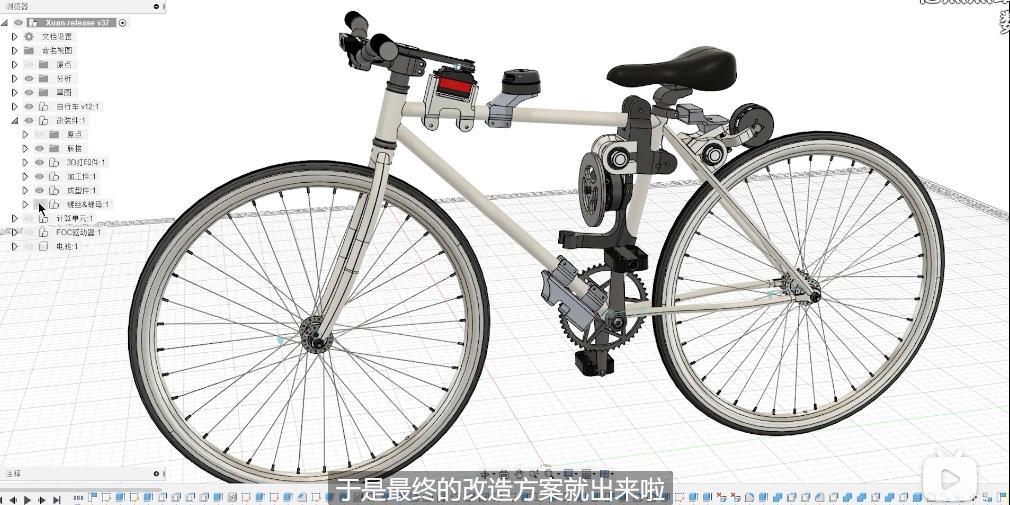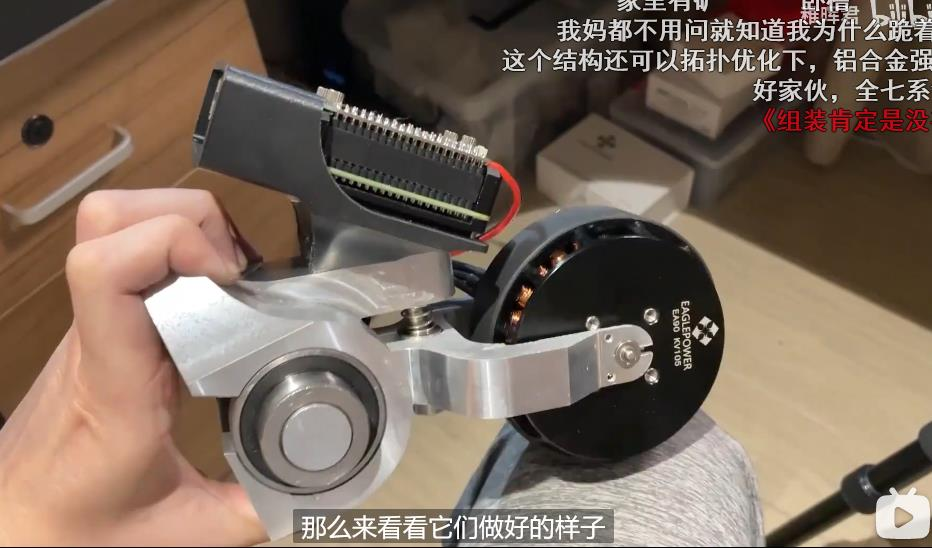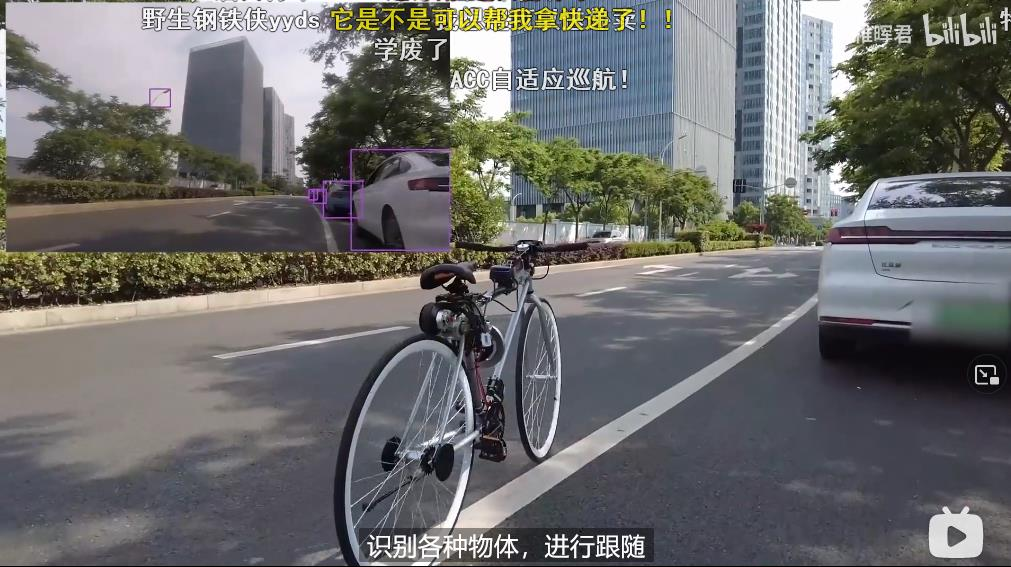After the accident, he wondered how hard it might be to improve the stability of his bicycle and over a four month period, working on it on weekends, he developed a system that not only improved the stability of his bicycle, but turned it into an autonomous vehicle. He developed a drive system, making plastic parts on a friend’s 3D printer (we all have those, right?), built a sensory network, including an RGBD depth camera, accelerometer, LIDAR, and gyroscope to detect surrounding conditions, and designed and built both the circuit board and the perception and control algorithms. Using a CAD modeling tool, he added details to his simple bicycle, and had the metal parts tooled. There is a small display on the control box to show various parameters to the user and the system runs (bicycle and electronics) on a model airplane battery that lasts for 2 – 3 hours.
Once he installed the system on his bicycle, he used a gaming engine to make modifications and improvements by creating simulations, and set the bicycle loose. The video of him describing the entire development process (in detail and in Chinese) has over 1.6m hits and he has opened the project up to students that have an interest through open source. The only thing the bicycle cannot do is carry a passenger (yet), but its only a demo project. The GIF of the bicycle on the move is here: https://www.ednchina.com/d/file/news/2021-06-09/0008471fdeae7e8a855e2e5d7d6ebb1b.gif




 RSS Feed
RSS Feed